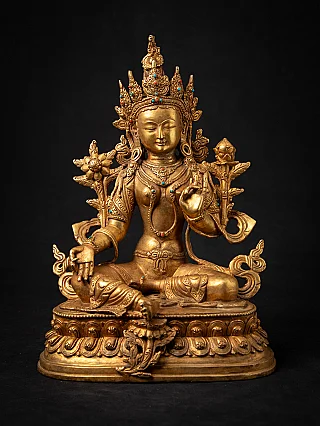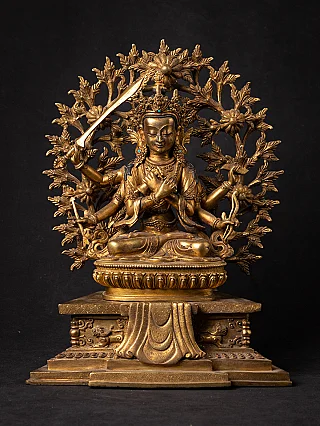Lumbini - A holy place in Nepal
Author : Peter Vredeveld

Lumbini is a Buddhist pilgrimage site located in Nepal
Lumbini, situated in the Rupandehi district of Nepal, stands as a sacred Buddhist pilgrimage site. The roots of this revered place delve deep into history, as it is the birthplace of Lord Buddha, born from Queen Maya Devi in 623 BCE. Lumbini holds immense significance for Buddhists worldwide, ranking among the four most crucial pilgrimage destinations alongside Kushinagar, Bodhgaya, and Sarnath. Designated as a UNESCO World Heritage site in 1997, Lumbini encapsulates the cultural and heritage essence associated with Buddha.
Historical Significance and Origin
In Sanskrit, "Lumbini" translates to "the lovely." Lord Buddha acknowledged Lumbini as one of the four holy sites of Buddhism in the Parinibbana Sutta. Nestled at the foothills of the Terai region of Nepal, Lumbini was once a lush garden adorned with green and shady Sal trees during the time of Lord Buddha. Ruled predominantly by the Shakyas and Koliyas clans, King Suddhodana, the father of Lord Buddha, governed Lumbini. Queen Maya Devi gave birth to Siddhartha Gautama, who later became Buddha, under a Sal tree during her journey to her parents' home.
Siddhartha's Enlightenment Journey
Originally named Siddhartha, Prince Gautama lived a life shielded from the world's suffering. Only when he witnessed an older man during a visit to his kingdom did he become acutely aware of human suffering. To seek answers, he left Lumbini and attained enlightenment after six years of hardship and meditation, becoming known as Gautama Buddha.
Ashoka's Mark and the Ashoka Pillar

In 249 B.C., Emperor Ashoka visited Lumbini and left an indelible mark by erecting an inscribed stone pillar, now famously known as the "Ashoka Pillar." This pillar, marking the birthplace of Buddha, has become a symbol of reverence. Though Shui-Ching-Chu noted the existence of the Ashoka Pillar in Lumbini during the 4th Century, it gained global recognition as an emblem of Buddha's birth site.
Notable (Famous) Sites in Lumbini
- Maya Devi Temple and Sacred Complex:
Dedicated to Queen Maya Devi, the mother of Lord Buddha, this temple showcases panels depicting her holding the Sal Tree, with the young Buddha emerging on the right side, taking seven steps.
- Devdaha:
Once the ancient capital of the Koliya Kingdom, Devdaha is where Prince Siddhartha spent his early childhood. Gautama Buddha visited Devdaha seven years after attaining Nirvana.
- Ashoka Pillar:
An iconic attraction in Lumbini, the Ashoka Pillar stands tall as a testament to Emperor Ashoka's reverence for the birthplace of Buddha.
Cultural Recognition and Modern Significance
In 2013, Nepal's Central Bank paid homage to the birthplace of Lord Buddha by featuring Lumbini on the 100 Nepali rupee note. This recognition reflects the enduring cultural and historical importance of Lumbini, cementing its place as a beacon of Buddhist heritage and a symbol of peace and enlightenment.
In conclusion, Lumbini remains a timeless testament to the birth of Lord Buddha, attracting pilgrims and admirers from across the globe. Its rich history and the spiritual aura surrounding its sacred sites make Lumbini an integral part of Buddhist heritage and a symbol of peace and enlightenment.
Frequently Asked Questions (FAQs)
- Why is Lumbini considered a sacred pilgrimage site?
Lumbini is revered as the birthplace of Lord Buddha, holding immense significance for Buddhists worldwide.
- What does the term "Lumbini" mean in Sanskrit?
In Sanskrit, "Lumbini" translates to "the lovely."
- What is the historical importance of the Ashoka Pillar in Lumbini?
The Ashoka Pillar, erected by Emperor Ashoka in 249 B.C., marks the birthplace of Buddha and is a symbol of reverence.
- Are there other notable sites in Lumbini besides the Maya Devi Temple and Ashoka Pillar?
Yes, Devdaha, the ancient capital of the Koliya Kingdom, is significant, and there are various sacred sites within the Lumbini complex.
- Why is Lumbini listed as a UNESCO World Heritage site?
Lumbini received UNESCO recognition in 1997 due to its historical and cultural importance as the birthplace of Lord Buddha.
Share this page














































